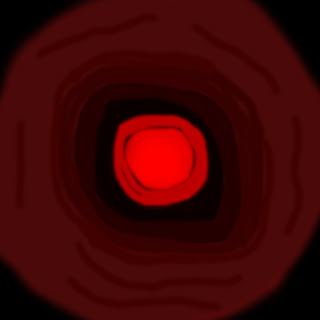In order to start texturing the wings of my tie fighter, I first had to create a UVW Map.
I added a 'UVW Map' form the modifier list, to begin with. This creates a map of the object.
I now had to add an 'Unwrap UVW' modifier from the modifiers list. This was to unwrap the map so that I would be able to export it and texture it in Photoshop.
From the new Unwrap UVW panel on the right:
I chose to open the UV Editor so that I would be able to render the final map and save it. Here is what the final map looked like:
Once I'd imported the UV map into Photoshop, I was ready to start editing the image so that it looked like the wing of the tie fighter.
I started by getting the 'Pen' tool first and going round the very edge of the shape until I had joined the start and finishing points. I then did this again, only this time I started about a centimetre inwards to draw the shape. As soon as I had completed the two pen lines around the shape, I got the fill tool from the tools panel and selected a light grey colour from the colour pallet, and filled in the area between the two pen lines.
Now the edge of the wing was made, I wanted to start making the centre of it. Because I wanted the inner part of the wing to be the same shape as the rest of the wing, I felt it was better to copy and paste the edge I had just created rather than trying to draw the shape freehand. So I used the short cut 'ctrl' + 'c' to copy it and 'ctrl' + 'v' to paste it. I then highlighted the new layer which had been created and went to the menu at the top and chose the 'Transform' option and 'Scale'. I then held down the shift key so that I could transform all the sides equally, and made it the correct size and made sure it was positioned in the centre of the shape.
Using the same technique as before, I copied and pasted the same shape and transformed the scale of it so that it became small enough to fit just inside the shape I had previously made. I then selected the Fill Tool again and from the colour pallet I selected A slightly darker shade of grey and filled the shape.
After this, I copied and pasted the shape for one final time. I transformed the scale again so that it fitted snug inside the previous shape, and altered the colour so that it was an even darker shade of grey.
I now wanted to create two smaller circles to fit in the very centre of the shape. To do this, I selected the 'Ellipse' tool from the panel and held down the 'Shift' key whilst I drew the circle so that it came out perfectly round. I then filled it with a darker shade of grey than before. Using the shortcuts, I copied and pasted the circle and transformed the scale so that it became slightly smaller than the one previous. I filled the final circle black.
Once I'd created all the inner sections of the wing, I merged all the different layers together to keep them tidy and clear.
Now I wanted to start creating the six spokes of the wing. I did this by getting the 'Pen' tool again and drawing two straight lines with points at both ends going from the outer edge to the second inner shape. I filled this spoke the same grey that I had used to fill the second inner shape. I also, drew a thick dark grey line going down the centre of the spoke. For this line, I used the 'Line' tool and adjusted it's thickness.
As I had one spoke made, I felt it would be easier to copy and paste this five more times so that all of the spokes would match evenly. After I had all my six spokes pasted, I went to the top menu to the 'Transform' option, and this time chose 'Rotate'. I then rotated all the spokes accordingly so that they were all in the correct position on the wing.
Additionally, at the end of each spoke (towards the centre), I drew a thinner black line using the 'Line' tool connecting the end to the centre black circle so it looked like they were all joined. As soon as I had all my spokes in the correct place, I merged all the layers together so that they were all in one layer to make it easier.
The last thing left to create was the fine grey lines against the black, between each spoke. To do this, I selected the 'Line' tool and made sure I had a thin line selected in the options panel. I then went on to draw multiple lines directed from the outer edge inwards towards the centre. This took quite some time, but once I had made them all I merged all the separate layers together to tidy it up (as there was about 90 odd different lines).
Here is what the final wing looked like:
My wing texture was now ready to import into 3dsMax. So I saved the image and then back in 3dsMax, I opened up the material editor window.
I selected the image by going to the grey box next to the 'Diffuse' option and selecting bitmap then my image. I then clicked the icon to apply the texture to the wing.
















































